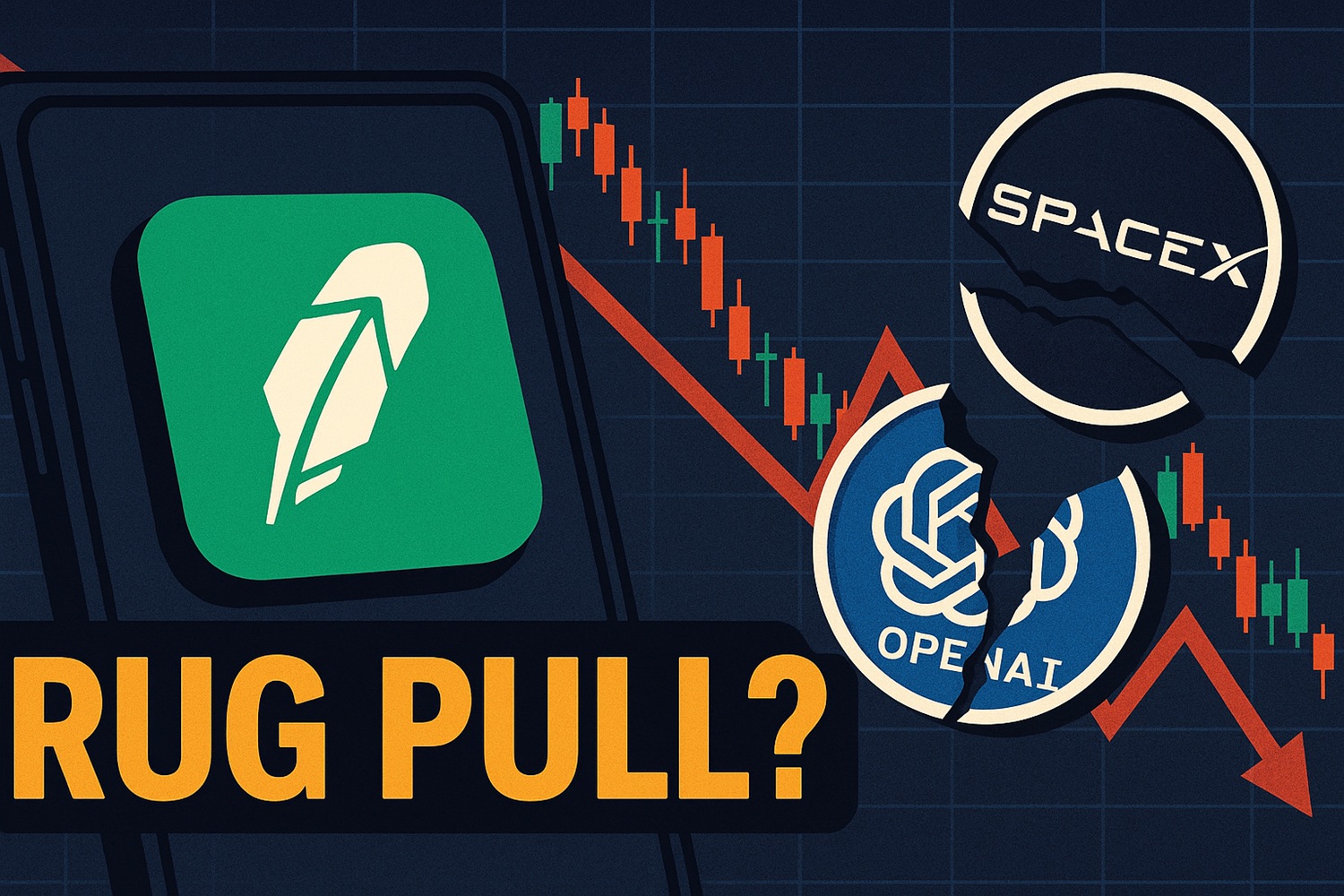Robinhood faces scrutiny after allegedly rug-pulling tokenized SpaceX and OpenAI stocks on Arbitrum. Was it a blockchain test gone wrong—or something more serious?
When Tokenized Stocks Become a Cautionary Tale
Robinhood recently found itself at the center of controversy after launching and abruptly removing tokenized representations of SpaceX and OpenAI equity on the Arbitrum network. These tokens, named $SPACEX and $OPAI, were made available to the public on decentralized exchange Uniswap, only to be later renamed as “Demo Token 1” and “Demo Token 2” and completely wiped from the platform—without warning or compensation.
Chain Reaction: A ‘Test’ That Burned Real Investors
The events unfolded without any official announcement. Blockchain data reveals that the tokens were created by an address beginning with 0x44c7, and liquidity pools were established by 0xE485. After attracting retail participants who used ETH and USDC to trade these tokens, Robinhood removed the pools, upgraded the smart contracts, and destroyed the tokens, causing investor funds to effectively vanish.
A well-known crypto analyst, @Ape_from_Korea, raised the alarm on X (formerly Twitter), accusing Robinhood of deceptive conduct:
“If this was just a test, you shouldn’t have conducted it publicly on Arbitrum. You shouldn’t have named it ‘SpaceX’ to attract retail investors, and you definitely shouldn’t destroy tokens you sold to people—acting as if nothing happened.”
Adding to the confusion, Robinhood then used a new wallet labeled “Robinhood: Deployer” to mint fresh tokens with identical names and quantities—raising suspicions of manipulation.
Regulatory Trouble Brewing
As news of the incident spread, it even caught the attention of regulators. Lithuania’s central bank reportedly launched a preliminary investigation, as Robinhood holds a license issued there. Crypto community figure 何幣 commented:
“If Robinhood can’t back these tokens with real shares, then it’s misleading at best. These are meme coins in disguise.”
While Robinhood’s CEO Vlad Tenev had previously promoted the tokens as “official stocks,” the company has yet to release a detailed explanation or commit to any user reimbursements.
Mistake or Malice? The Jury’s Still Out
Two interpretations of the incident have emerged:
- Honest Mistake: A test contract was accidentally deployed on the mainnet and misused unintentionally. If true, the company may compensate affected users based on token holdings.
- Deliberate Rug Pull: A strategic play to exploit brand recognition, cash out via liquidity withdrawal, and erase evidence. This scenario suggests premeditation and possible legal repercussions.
Either way, users are left in the dark—with funds lost, and no formal apology or restitution from Robinhood.
The Bigger Picture: Tokenization Still in Legal Gray Zone
This incident reopens the debate around tokenized real-world assets (RWA). As blockchain-based equity representations gain traction, so does the need for robust oversight. Whether this was a genuine product test or a misrepresentation with legal implications, it underscores a hard truth in crypto: even trusted brands can fail their users on-chain.
⚠️ Risk Disclosure
Cryptocurrency investments involve significant risk and price volatility. You may lose your entire capital. Always conduct thorough research and exercise caution.

![[News] Bitcoin at a Turning Point? 10x Research Signals a Bullish Macro Shift Ahead](https://cryptoexplores.com/wp-content/uploads/2025/06/new20250616.jpg)
![[News] Binance Lists $HOME, the Gas-Free, Bridge-Free All-in-One DeFi App](https://cryptoexplores.com/wp-content/uploads/2025/06/news20250617.jpg)